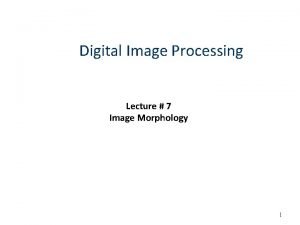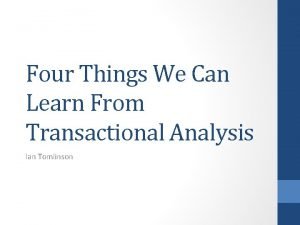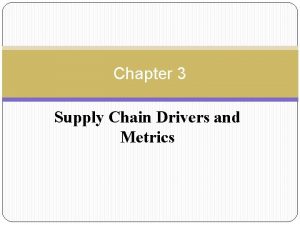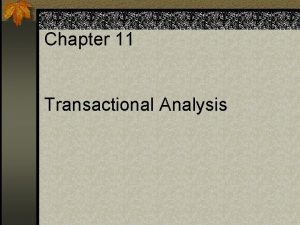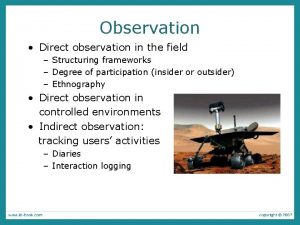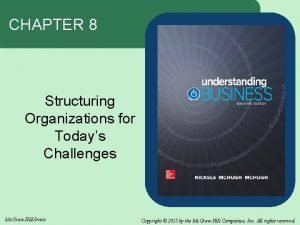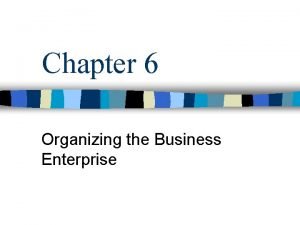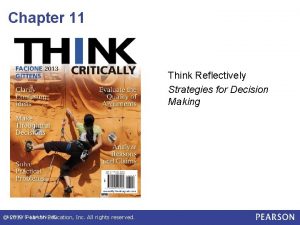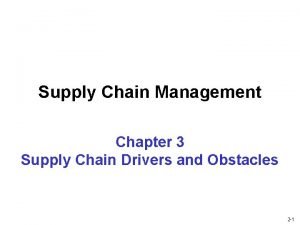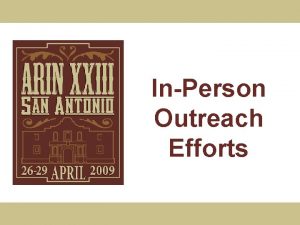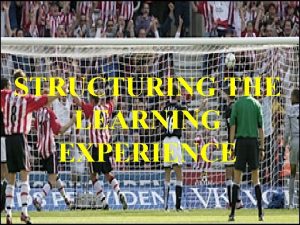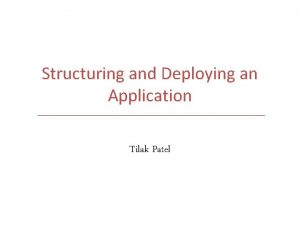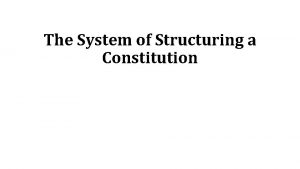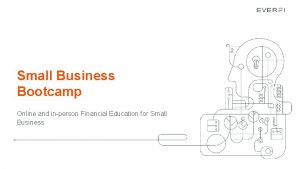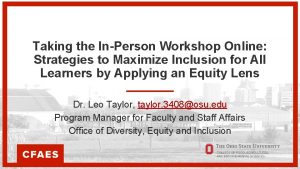STRUCTURING YOUR COURSE From inperson to online What
















- Slides: 16

STRUCTURING YOUR COURSE From in-person to online: What to think about.

CREATING A ROADMAP FOR ONLINE TEACHING SUCCESS Questions, Components, Plan

YOUR TEACHING STYLE

THINK ABOUT • How interactive are you? • What types of activities do you tend to do in class most often? • How comfortable are you with direct lecture delivery? • How much feedback do you need from your student audience?

YOUR STUDENTS’ NEEDS This Photo by Unknown Author is licensed under CC BY-SA

THINK ABOUT • How much interaction do they need? • What are their expectations for the online classroom? • What ‘supplementary’ information or support can you provide online? • How can you be as clear as possible in your delivery, tasks and expectations?

CHANGES TO ASSIGNMENTS AND MARKING This Photo by Unknown Author is licensed under CC BY-SA-NC

THINK ABOUT • How will any assessment tasks need to change to meet the new format? • What do students need to know, about those changes? • How will you measure and grade participation? • What ‘homework’ or online activities can you create that you may not have needed in your in-person classroom?

YOUR LIFE, YOUR TIME

THINK ABOUT • How long can you realistically spend preparing your online classroom? • What aspects will you have to let go of? • How can you use technology intelligently to support yourself and your students? • How can you set boundaries in a digital environment? ?

A FEW MODELS TO CONSIDER

SIMPLE CONVERSION • Lecture delivery remains live • Supported by Zoom-based office hours • LMS remains mostly the same • Assessment tasks remain the same/mostly the same

LECTURE PRE-RECORD + DISCUSSION • Lectures content moves to videos • Live discussion forums held regularly to discuss lecture content • LMS remains mostly the same • Participation-based assessment tasks may be added • Major assignments remain similar/same

FOR INTERACTIVE CLASSES • Pre-record lecture/conceptual content • Live discussion activities, using Zoom ‘breakout rooms’ feature for small group work • Use collaborative software to post assigned activities between classes • Join students up via Slack, Whats. App, We. Chat or other social media

REMEMBER: YOU DON’T HAVE TO PRESENT EVERYTHING! • Zoom Screen Sharing • Zoom Whiteboard • Share hosting • Use others’ videos (youtube, TED Talks) • Invite guest lecturers into Zoom, or pre-record interviews • Encourage student presentations • Help students to engage with each other in your online classroom by facilitating, not lecturing

WHAT’S NEXT? The online class environment: Creating warmth in a digital setting This Photo by Unknown Author is licensed under CC BY-NC
 Requirements structuring
Requirements structuring Structuring arguments
Structuring arguments Structuring element
Structuring element Thickening and thinning in image processing
Thickening and thinning in image processing Time structuring in transactional analysis
Time structuring in transactional analysis Drivers and metrics in supply chain
Drivers and metrics in supply chain Types of transactions in transactional analysis
Types of transactions in transactional analysis Transactional analysis
Transactional analysis Deal structuring process
Deal structuring process Direct and indirect observation
Direct and indirect observation Tax-efficient structuring
Tax-efficient structuring Structuring organizations for today's challenges
Structuring organizations for today's challenges Organizing the business enterprise
Organizing the business enterprise Wide vs narrow span of control
Wide vs narrow span of control Dominance structuring example
Dominance structuring example Components of facilities decisions
Components of facilities decisions Islamic structuring
Islamic structuring


